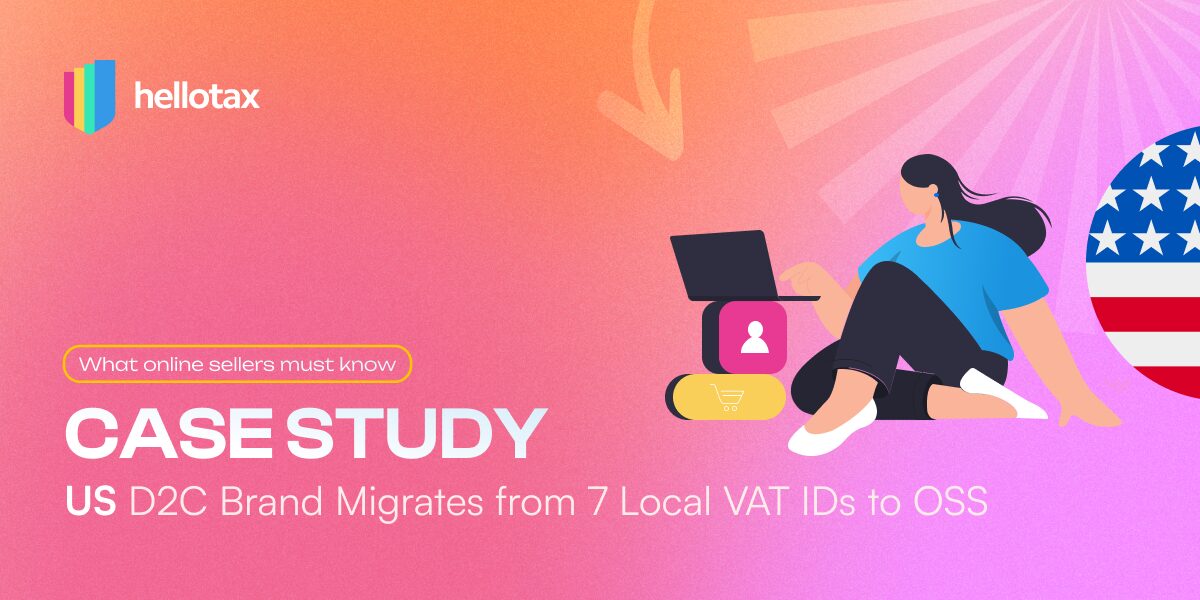The United Kingdom remains a key market for online sellers, especially those using platforms like Amazon, eBay, and their own eCommerce stores.
Understanding VAT in the UK is essential for staying compliant and maintaining profit margins. In this article, we explain what VAT is, the different VAT rates in UK in 2025, and how online sellers can manage their obligations effectively.
Antonia Klatt
Last Updated on 27 February 2022
What is VAT in the UK?
Value Added Tax (VAT) is a consumption tax charged on most goods and services sold in the UK. It is collected at each stage of the supply chain and ultimately paid by the end consumer.
If you are selling goods or digital services to UK customers, VAT may apply. Sellers based both inside and outside the UK must consider registration thresholds, invoicing rules, and reporting deadlines to stay compliant.
Important: Since the UK’s departure from the EU, it now operates its own VAT system — separate from EU-wide schemes such as the OSS or IOSS. However, similar rules apply when importing goods or selling remotely to UK consumers.
Current VAT Rates in UK (2025)
Here are the VAT rates currently in effect in the United Kingdom, as of August 2025:
Standard Rate – 20%
Applies to most goods and services not specifically listed under reduced or zero rates.
Examples: Electronics, clothing, cosmetics, furniture, online courses (unless exempt).
Reduced Rate – 5%
Applies to specific goods and services considered essential or socially important.
Examples include:
-
Domestic fuel and power (electricity, gas, heating oil)
-
Energy-saving materials in residential properties
-
Children’s car seats
-
Some social housing services
-
Certain medical aids for people with disabilities
Zero Rate – 0%
Charged at 0%, but goods/services must still be reported on VAT returns.
Examples include:
-
Children’s clothing and footwear
-
Books and printed publications (excludes e-books)
-
Basic food items (unprocessed)
-
Domestic water supply
-
Prescription medicines
-
Public transport fares (bus, train, domestic flights)
-
Exports of goods outside the UK
-
Certain construction services for new residential properties

Book a free consultation
Our VAT experts are happy to help you. Book a free consultation today!
How and When to Pay VAT in the UK
VAT-registered businesses must file VAT returns, usually quarterly or monthly, depending on their registration.
Payment Deadline:
VAT is generally due 30 days after the end of the VAT period, unless you use a direct debit or special accounting scheme.
Postponed VAT Accounting (PVA):
If you import goods into the UK, you can use PVA to account for import VAT on your VAT return instead of paying it immediately at the border.
What About Digital Services?
If you are selling digital services (e.g. software, downloads, online memberships) to UK consumers, UK VAT applies regardless of your business location. Non-UK businesses must register and collect VAT from the first sale — there is no threshold for non-resident digital service providers.
VAT Registration Thresholds in 2025
-
UK-based businesses:
Must register once VAT-taxable turnover exceeds £90,000 over a rolling 12-month period.
(Threshold increased from £85,000 in April 2024.) -
Non-UK businesses:
No threshold. You must register as soon as you sell any taxable goods or services in the UK.
Final Thoughts
Navigating VAT rules in the UK can be complex, especially after Brexit. Whether you are selling physical products, digital tools, or hybrid services, understanding the correct VAT rate is essential.
At hellotax, we help online sellers automate VAT compliance across Europe — including UK VAT registrations, filings, and reporting. Our platform saves you time and reduces the risk of costly errors.
Need help with UK VAT?
Talk to our team and discover how we can support your business.
Related Articles
Note: the VAT in the UK can be paid 30 days after the monthly/quarterly VAT reporting period end.





